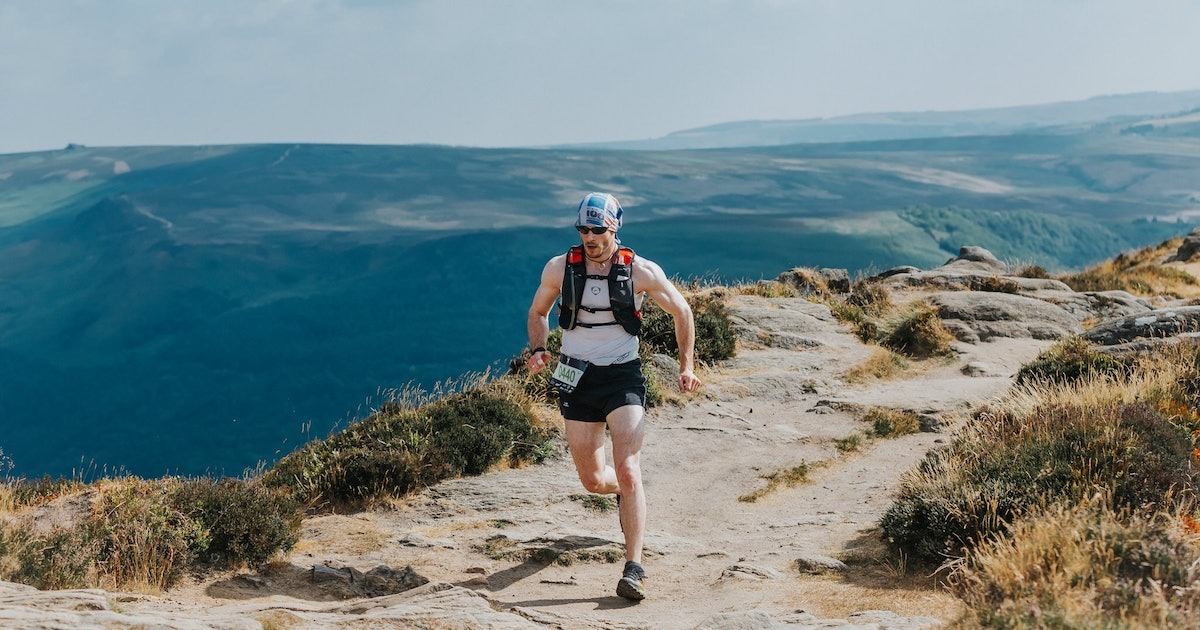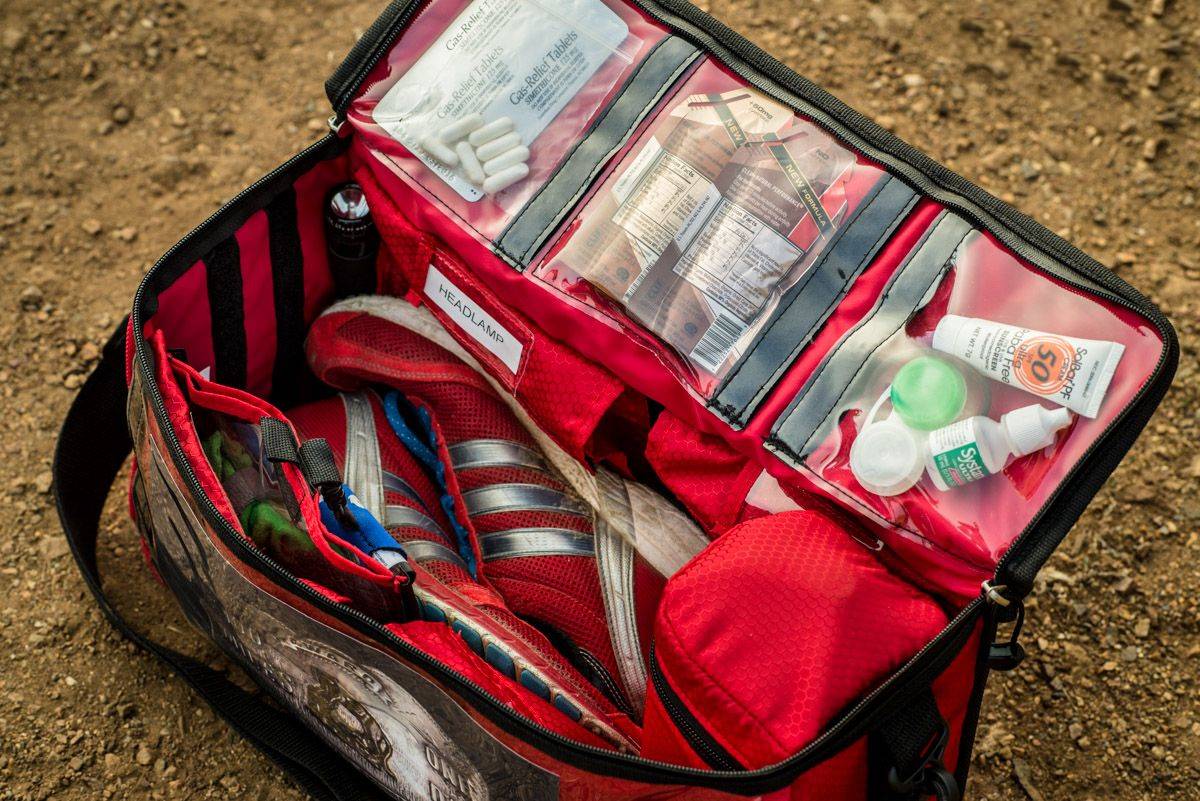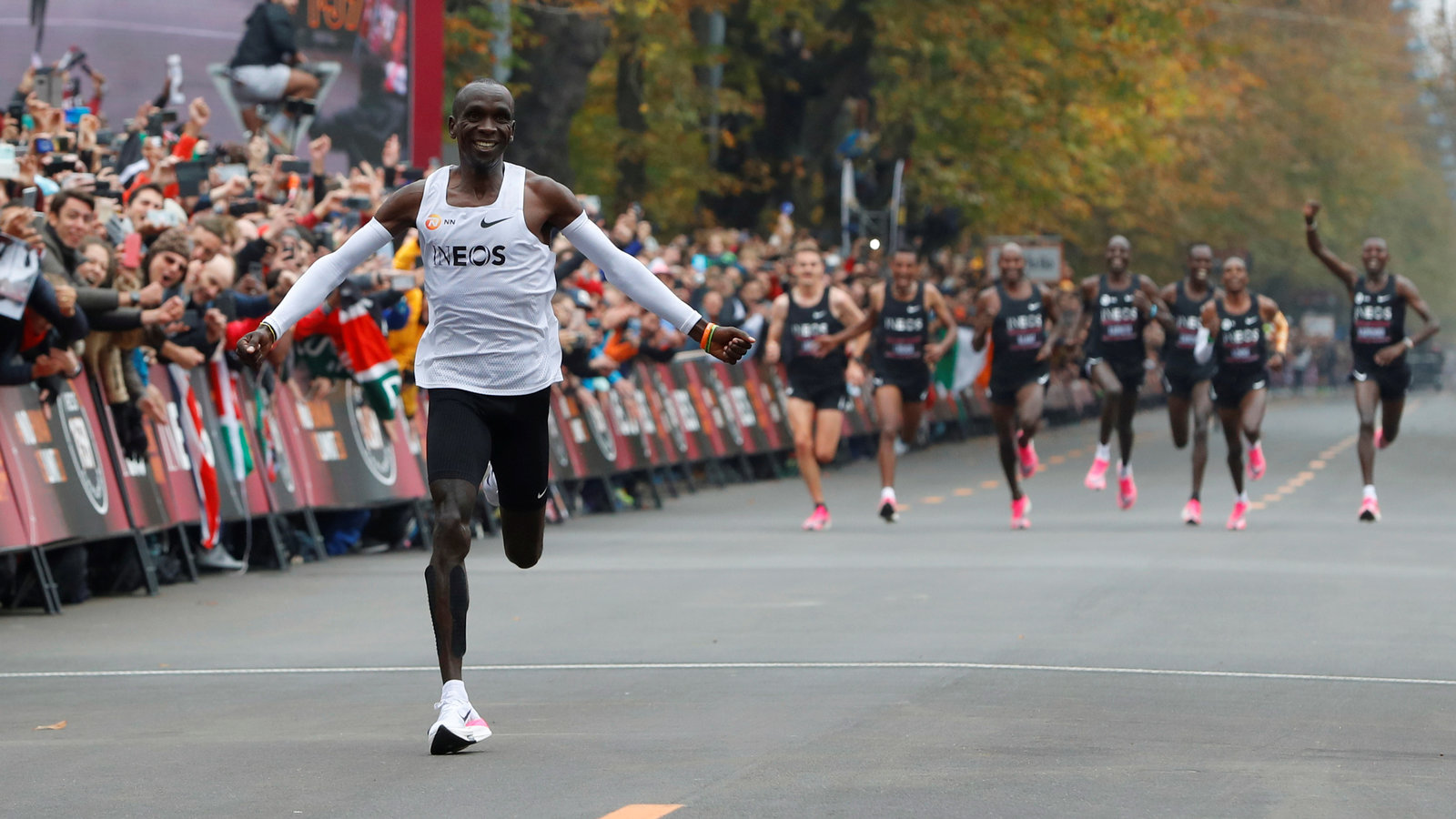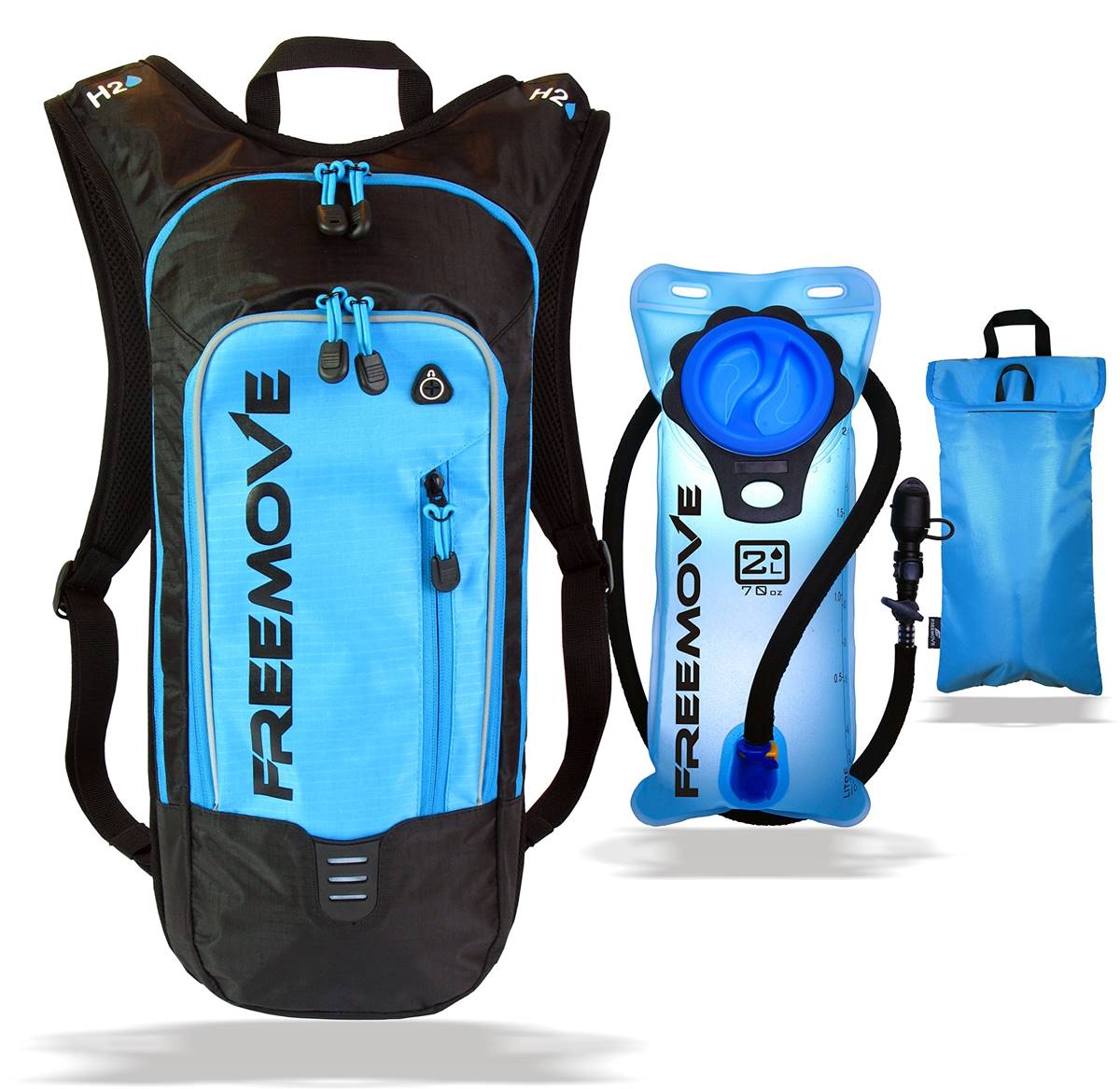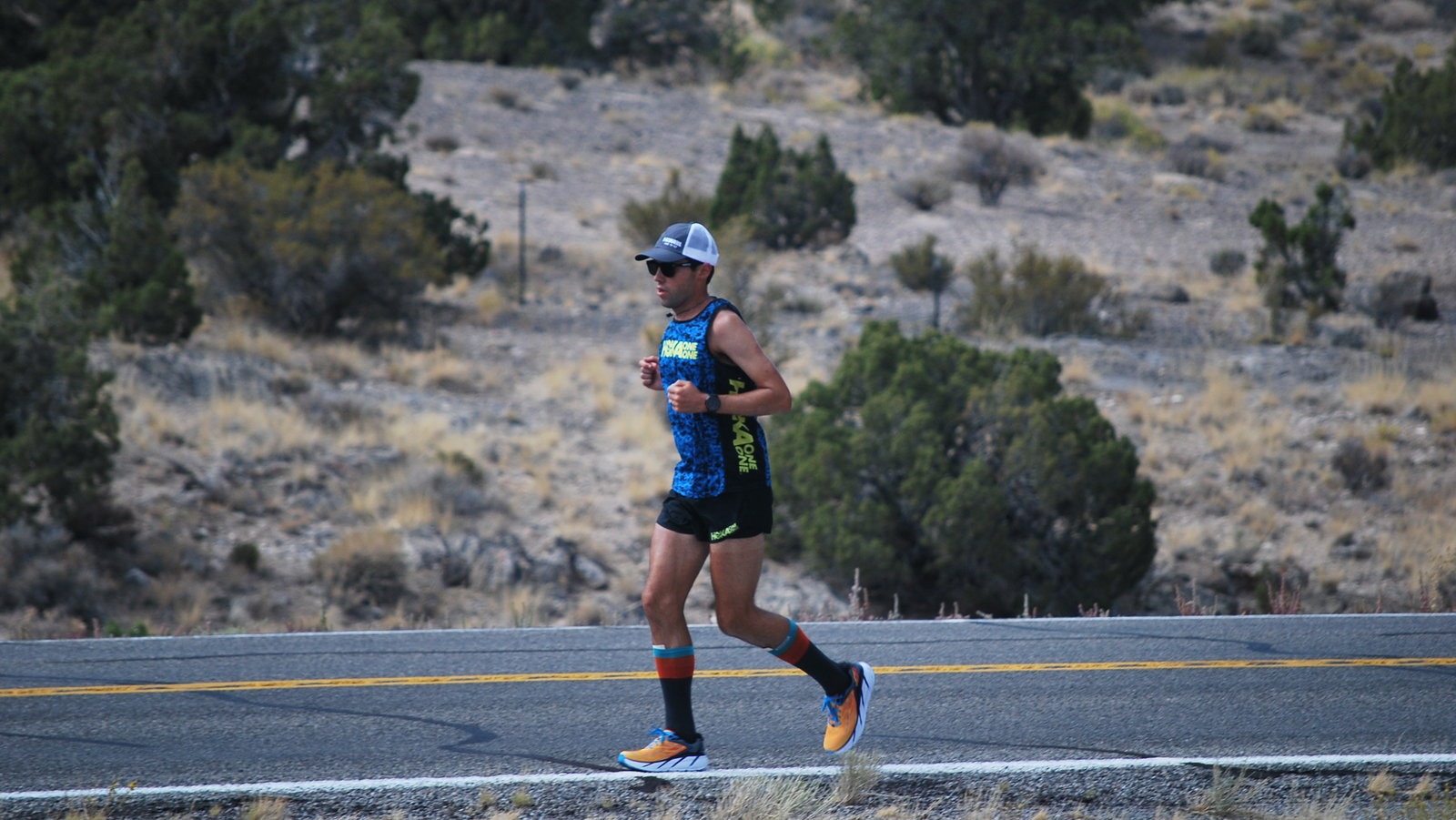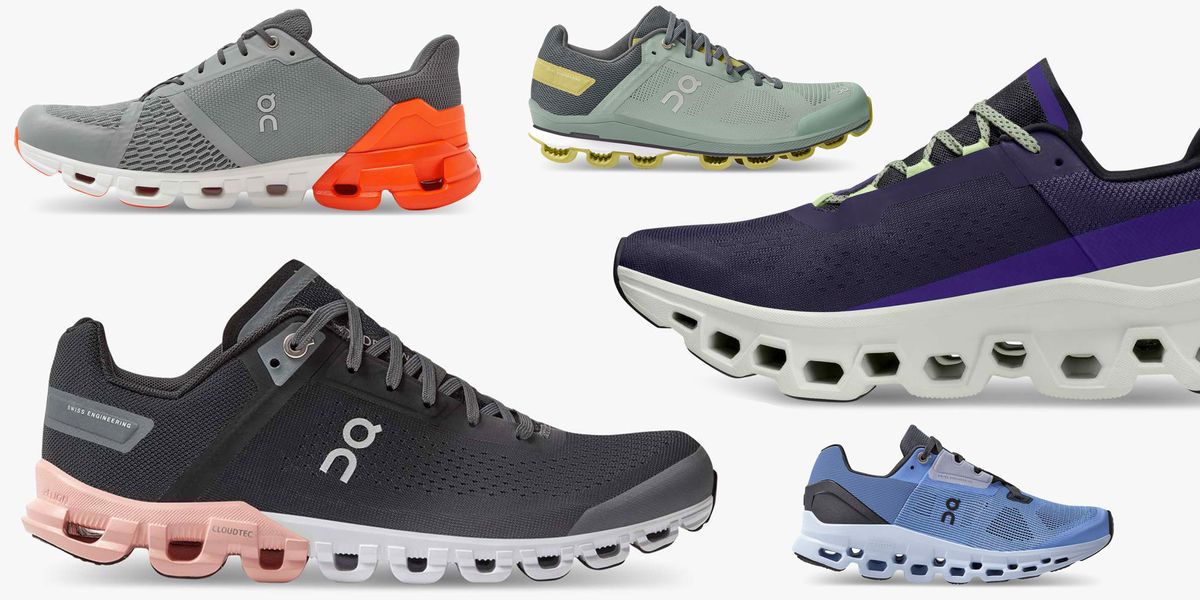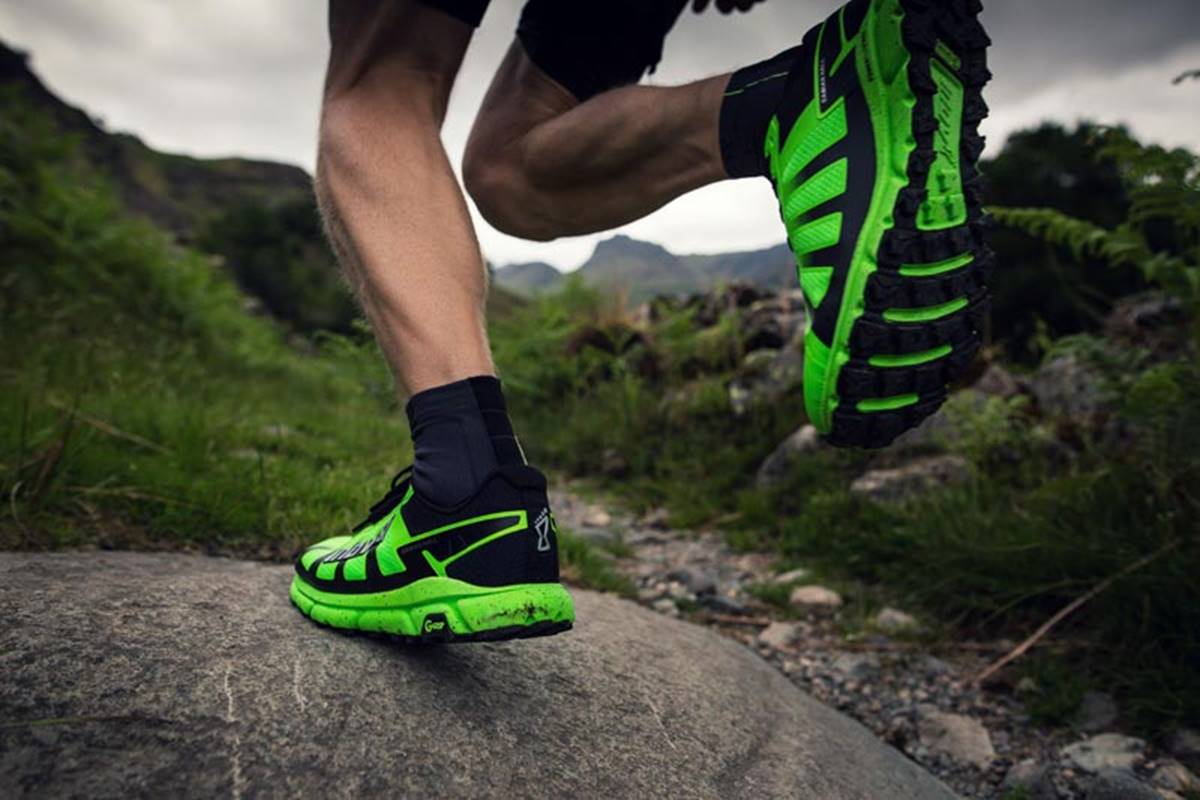

Featured
How To Fit Ultramarathon Shoes
Modified: May 22, 2024
Learn how to find the perfect ultramarathon shoe with this comprehensive guide, featuring expert tips and recommendations for all types of runners.
Introduction
Welcome to the world of ultramarathon running, where endurance and strength meet adventure and determination. Ultramarathons, races longer than the standard marathon distance of 26.2 miles, push athletes to their limits both mentally and physically. And to conquer these grueling races, it’s essential to have the right equipment.
One of the most crucial pieces of equipment for ultramarathons is your shoes. A good pair of ultramarathon shoes not only provides comfort and support but also helps prevent injuries and boost performance. In this article, we’ll guide you through the process of finding the perfect ultramarathon shoe.
Whether you’re a seasoned ultrarunner or are just starting your ultramarathon journey, finding the right shoe size is the first step towards a successful race. Proper sizing ensures a comfortable fit and reduces the risk of blisters, hot spots, and toenail injuries. We’ll cover the importance of accurate sizing in detail, along with tips for measuring your feet and selecting the appropriate shoe size.
Your foot anatomy and gait play a significant role in determining the right shoe for you. Understanding how your foot moves and the biomechanics involved will help you choose a shoe that provides the necessary support and stability. We’ll explore the anatomy of the foot and discuss various types of gait, enabling you to make an informed decision when selecting your ultramarathon shoe.
The terrain can greatly impact your choice of ultramarathon shoes. Different terrains call for specific features, such as increased traction for trail running or lightweight flexibility for road races. We’ll delve into the considerations you should keep in mind based on the terrain you’ll be running on.
Cushioning and support are vital factors to consider when selecting an ultramarathon shoe. The right amount of cushioning can help absorb shock and minimize fatigue, while support features can provide stability and prevent overpronation or supination. We’ll discuss the various levels of cushioning and support available, allowing you to find the perfect balance for your needs.
The upper of the shoe is another critical aspect to consider. The upper material and design can impact breathability, durability, and overall comfort. We’ll guide you through the different upper options available, from mesh for increased airflow to waterproof materials for wetter conditions, helping you choose the right shoe upper for your ultramarathon needs.
The heel-to-toe drop, also known as the offset, is an important specification to consider when selecting an ultramarathon shoe. This measurement indicates the difference in height between the heel and the forefoot. We’ll explain the concept of heel-to-toe drop and provide guidance on choosing the appropriate drop for your running style and preferences.
Trying on and testing various shoe models is crucial in finding the right ultramarathon shoe. We’ll provide tips for properly trying on shoes and testing them for comfort, fit, and performance. You’ll learn what to look for during the fitting process and how to identify any potential issues before making your final decision.
Occasionally, adjustments and modifications may be necessary to optimize the fit and performance of your ultramarathon shoe. We’ll explore common modifications such as adding insoles or customizing the lacing technique. These adjustments can make a significant difference in your overall running experience and help prevent discomfort or injuries.
Once you’ve found your perfect pair of ultramarathon shoes, the next step is breaking them in. Properly breaking in your shoes ensures that they mold to your feet, becoming more comfortable and supportive over time. We’ll provide guidance on how to break in your ultramarathon shoes without causing unnecessary pain or discomfort.
Now that we’ve outlined the roadmap for finding the perfect ultramarathon shoe, let’s dive into each section in more detail. By following these tips and considering all the factors involved, you’ll be well on your way to running your best race and achieving your ultramarathon goals.
Finding the Right Shoe Size
When it comes to selecting the perfect pair of ultramarathon shoes, getting the right shoe size is paramount. Ill-fitting shoes can lead to discomfort, blisters, and even injuries during your long-distance runs. Here are some essential tips to help you find the ideal shoe size for your ultramarathon adventures.
Measuring your feet accurately is the first step in determining your shoe size. Start by tracing the outline of your feet on a piece of paper while standing. Measure the length from the tip of your longest toe to the back of your heel. Use the measurement in centimeters or inches to find your corresponding shoe size in the brand’s sizing chart.
It’s important to remember that your shoe size can vary between brands and even between different shoe models from the same brand. Therefore, it’s always recommended to measure your feet and consult the brand’s sizing chart for each specific shoe you’re considering.
Pay attention to the width of your feet as well. Some brands offer varying width options, such as narrow, regular, and wide, which can greatly impact the comfort and fit of the shoe. If you have wider feet, opting for a wider width option can prevent discomfort and potential foot issues.
When trying on shoes, make sure there is enough room in the toe box. Your toes should be able to wiggle comfortably without feeling restricted. It’s advisable to leave a thumb’s width of space between your longest toe and the front of the shoe to ensure proper fit and prevent toe injuries, especially during long-distance runs.
Don’t be afraid to try on different sizes and styles to find the perfect fit. Remember that your shoe size can change over time, so regular measurements are essential, especially if you’ve experienced any foot growth or changes due to factors like pregnancy or weight loss.
If you’re ordering shoes online, take advantage of the brand’s return policy to try on multiple sizes and return the ones that don’t fit perfectly. Some brands even offer virtual fitting tools or recommendation algorithms based on your foot measurements, making online shoe shopping more convenient.
Lastly, always consider the socks you’ll be wearing during your ultramarathons. If you typically wear thicker or cushioned socks, you may need to go up a half size to accommodate for the extra volume they add. On the other hand, if you prefer thinner socks, you may be able to stick with your usual size.
Finding the right shoe size for your ultramarathon adventures is crucial for your comfort, performance, and overall enjoyment of the sport. By following these tips and taking the time to measure and try on different sizes and styles, you’ll be well on your way to finding the perfect fit and conquering those long-distance races with ease.
Understanding Foot Anatomy and Gait
When it comes to selecting the right ultramarathon shoe, understanding your foot anatomy and gait is essential. Your foot structure and the way you move can greatly impact the type of shoe that will provide the best support and stability. Let’s delve into the details of foot anatomy and gait analysis to help you make an informed decision.
Human feet are complex structures made up of bones, muscles, tendons, ligaments, and joints. The arches of the foot, namely the medial arch (located on the inside of the foot) and the lateral arch (located on the outside), play a crucial role in shock absorption and weight distribution during running.
There are three types of foot arches – low arches (also known as flat feet), normal arches, and high arches. Identifying your arch type can help determine the level of support and cushioning needed in your ultramarathon shoe. To determine your arch type, you can perform the “wet test” by wetting your feet and stepping on a piece of paper to observe the imprint.
Gait analysis is the process of assessing how you walk or run. It involves analyzing your stride, foot strike pattern, and pronation. Pronation refers to the natural inward rolling of the foot as it hits the ground and distributes the impact forces while running. There are three types of pronation – neutral, overpronation, and supination (or underpronation).
Neutral pronation is considered the most efficient and balanced gait pattern, where the foot rolls inward slightly to absorb shock. If you have neutral pronation, you can generally wear a wide range of shoe types, but choosing a shoe with moderate stability and cushioning is often recommended.
Overpronation occurs when the foot rolls excessively inward, and the arch collapses. This can potentially lead to various types of injuries. If you overpronate, you should look for shoes with motion control features and good arch support to help stabilize the foot and prevent excessive inward rolling.
Supination (underpronation) happens when the foot doesn’t roll inward enough, leading to most of the impact forces being absorbed on the outer edge of the foot. This can increase the risk of ankle sprains and stress fractures. If you have supination, choosing a shoe with excellent cushioning and flexibility is crucial to provide shock absorption and promote a more natural foot motion.
Performing a gait analysis can be done by consulting with a professional at a specialty running store or utilizing modern technologies such as treadmills with video analysis or wearable sensors. These tools can provide valuable insights into your running mechanics and help you make shoe choices that align with your specific gait pattern.
Understanding your foot anatomy and gait will guide you towards ultramarathon shoes that provide optimal support, stability, and comfort. By taking into account factors such as arch type, pronation, and gait analysis, you’ll be able to select a shoe that helps enhance your running performance and reduce the risk of injuries as you tackle those challenging ultramarathon distances.
Considering the Terrain
When preparing for an ultramarathon, it’s important to consider the terrain you’ll be running on. The type of terrain can significantly influence your choice of ultramarathon shoes. Different surfaces require specific features that provide traction, stability, and protection. Let’s explore the various terrains and the corresponding shoe considerations to help you conquer any type of ground.
Trail Running: Trails can present a variety of challenges, including uneven surfaces, rocks, roots, and muddy or slippery sections. For trail running, shoes with aggressive lugs on the outsole are essential to provide traction and grip on different terrains. Look for a durable outsole material that can withstand the rigors of trail running. Additionally, consider shoes with protective features like rock plates or toe guards to shield your feet from potential hazards.
Road Running: If you’re primarily running on paved surfaces, road running shoes are your best bet. These shoes tend to offer a lightweight design with ample cushioning for shock absorption on hard surfaces. Look for responsive midsole materials that provide energy return, which can help with efficiency and speed. Consider shoes with breathable uppers to ensure proper airflow and prevent overheating.
Mixed Surfaces: Some ultramarathons incorporate both trails and road sections. In this case, a versatile shoe that can handle various terrains is necessary. Look for a hybrid shoe that strikes a balance between trail running and road running features. These shoes often have moderate lugs for traction but aren’t as aggressive as dedicated trail shoes. Additionally, they may have a more durable and protective outsole to handle the demands of off-road sections.
Mountain Running: Mountain running involves tackling steep ascents, descents, and rugged terrain. For these challenging conditions, shoes with a robust outsole that offers maximum traction are crucial. Look for shoes with deep lugs and sticky rubber compounds to provide grip on slippery surfaces. Supportive and protective features, such as a reinforced toe cap and ankle support, can help enhance stability and reduce the risk of injuries on mountainous terrain.
Wet Conditions: If you’re running in wet conditions or crossing streams and rivers during your ultramarathons, waterproof or water-resistant shoes can be beneficial to keep your feet dry. These shoes have special membranes that prevent water from seeping in while still allowing moisture and sweat to escape. Keep in mind that waterproof shoes may not offer the same level of breathability as non-waterproof options, so consider the temperature and humidity levels when making your choice.
Extreme Weather: Ultramarathons in extreme weather conditions, such as snow, ice, or extreme heat, require specialized footwear. Look for shoes with insulation and traction features specific to these climates. For snowy or icy terrains, consider shoes with aggressive spikes or studs for enhanced grip. In extreme heat, look for shoes with breathable uppers and moisture-wicking materials to keep your feet cool and dry.
By understanding the terrain you’ll encounter during your ultramarathons, you can select shoes that offer the right combination of traction, protection, and performance. Remember to consider the specific challenges posed by the terrain and choose shoes that can handle the demands of your chosen adventure.
Evaluating Cushioning and Support
When it comes to ultramarathon running, the right amount of cushioning and support in your shoes can make a world of difference in your comfort, endurance, and performance. Evaluating these factors is crucial in selecting the ideal ultramarathon shoe. Let’s dive into the importance of cushioning and support and how to evaluate them for your needs.
Cushioning in running shoes helps absorb shock and impact forces, reducing the strain on your joints and muscles. The right level of cushioning will provide a comfortable and responsive ride, especially during long-distance runs. However, it’s essential to find the balance between too much and too little cushioning.
For ultramarathons, opting for shoes with adequate cushioning is generally recommended to minimize fatigue and prevent injuries. However, cushioning preferences can vary from runner to runner. Some runners prefer a plush, pillow-like feel, while others prefer a firmer and more responsive ride. It’s crucial to consider your personal preference and running style when assessing cushioning.
Support is another critical aspect to consider when selecting an ultramarathon shoe. Support features help stabilize the foot and prevent excessive inward rolling (pronation) or outward rolling (supination). Adequate support can enhance running efficiency, reduce the risk of injuries, and promote a more natural stride.
The level of support required depends on your foot structure and gait pattern. Overpronators often benefit from shoes with stability features, such as a medial post or firmer midsole material to help control excessive inward rolling. Underpronators or supinators may need shoes with a more neutral design that allow for a natural foot motion without restricting movement.
When evaluating cushioning and support, it’s essential to consider several factors:
- Level of Cushioning: Assess the amount of cushioning in the midsole. Look for shoes with enough cushioning to provide comfort during long runs without feeling overly bulky.
- Responsiveness: Consider the responsiveness of the shoe. Shoes with responsive cushioning have a higher energy return, which can help with propulsion and speed.
- Stack Height: Evaluate the stack height, which refers to the thickness of the midsole. A higher stack height can offer more cushioning, but it can also lead to a higher shoe profile and potential stability issues.
- Support Features: Examine the support features integrated into the shoe. Look for technologies like medial posts, stability plates, or support struts that can help control pronation and promote a stable gait.
- Arch Support: Consider the level of arch support provided by the shoe. If you have high arches or low arches (flat feet), look for shoes that offer the appropriate level of arch support for your foot type.
Remember that everyone’s cushioning and support needs are unique. It’s advisable to try on different shoe models and feel their cushioning and support firsthand. Pay attention to how the shoes feel during your test runs and consider any specific areas of discomfort or support deficiencies that you may experience.
Evaluating cushioning and support is a crucial step in selecting the right ultramarathon shoe. By considering your cushioning preferences, evaluating the shoe’s responsiveness and support features, and trying on different models, you’ll be able to find the ideal shoe that offers the perfect balance for your comfort, stability, and performance on those long-distance runs.
Choosing the Right Shoe Upper
When it comes to selecting an ultramarathon shoe, the upper plays a crucial role in providing comfort, durability, and protection. The upper is the part of the shoe that covers the foot and is responsible for breathability, fit, and overall performance. Understanding the different materials and designs of shoe uppers will help you choose the right one for your ultramarathon adventures.
One of the primary considerations for the upper is breathability. Running long distances can generate heat and moisture, causing discomfort and potentially leading to blisters. Look for uppers made of mesh or woven materials that allow for airflow and ventilation, keeping your feet cool and dry. These breathable materials help prevent the accumulation of sweat and reduce the risk of friction-related issues.
Durability is another important factor to consider. Ultramarathons put shoes through rigorous tests, including challenging terrains and varying weather conditions. Look for uppers made of durable materials that can withstand the demands of long-distance running. Reinforced overlays and protective features, such as toe guards or rubberized overlays, can add durability and protect against abrasion and debris.
The fit of the upper is crucial for comfort and performance. Different shoe models and brands have varying fit characteristics. Some shoes offer a wider toe box for those with wider feet or for accommodating foot swelling during long runs. Others have a snugger fit for a more secure and locked-in feel. Consider your specific foot shape and preferences when evaluating the fit of the shoe upper.
Water resistance is a consideration for runners who may encounter wet or rainy conditions during their ultramarathons. If you anticipate running through water crossings or in inclement weather, look for shoes with water-resistant or waterproof uppers. These uppers are treated with special coatings or membranes to prevent water from entering the shoe, keeping your feet dry and reducing the risk of blisters and discomfort.
Another factor to consider is the weight of the upper. Ultramarathon runners often prioritize lightweight footwear to minimize energy expenditure and fatigue over long distances. Look for uppers made of lightweight materials without sacrificing durability and support. The right balance of weight and durability will ensure your shoes don’t become a hindrance during your races.
The design and construction of the upper also impact overall performance. Seamless uppers reduce the risk of irritation and rubbing, especially during long runs. Additionally, consider features such as padded collars and heel counters that provide cushioning and stability around the ankle. These features help enhance overall comfort and reduce the risk of chafing and blisters.
Lastly, consider any personal preferences or specific considerations you may have. It’s always helpful to try on different shoe models to assess how the upper feels on your feet. Pay attention to any potential pressure points or areas of discomfort.
Choosing the right shoe upper for your ultramarathon adventures is crucial for comfort, performance, and durability. By considering elements such as breathability, durability, fit, water resistance, weight, and design, you’ll be able to find the perfect upper that suits your specific needs and conquers those long-distance challenges.
Determining the Correct Heel-to-Toe Drop
When selecting an ultramarathon shoe, one important factor to consider is the heel-to-toe drop, also known as the offset. The heel-to-toe drop refers to the difference in height between the heel and the forefoot of the shoe. This measurement can impact your running mechanics and overall comfort. Understanding the heel-to-toe drop and determining the correct offset for your needs will help you find the right ultramarathon shoe.
The heel-to-toe drop is typically measured in millimeters. Traditional running shoes often have a drop of around 10-12mm, where the heel is higher than the forefoot. This design promotes heel striking, which is when the heel makes contact with the ground first during the running stride. Heel striking can provide cushioning upon impact, but it can also increase stress on the joints.
Minimalist or barefoot-style shoes have a lower heel-to-toe drop, usually ranging from 0-4mm. These shoes mimic a more natural running gait, promoting a midfoot or forefoot strike, where the ball of the foot makes initial contact with the ground. This style of running can help distribute the impact forces more evenly throughout the foot and lower leg but may require an adjustment period for those accustomed to heel striking.
When determining the correct heel-to-toe drop for your ultramarathon shoe, several factors should be considered:
- Running Form: Assess your running mechanics and foot strike pattern. If you naturally tend to land on your forefoot or midfoot, shoes with lower heel-to-toe drops might be more suitable. If you primarily heel strike, a higher drop shoe may provide the cushioning and support you need.
- Transition Period: It’s important to transition gradually when changing the heel-to-toe drop. A sudden switch to a drastically different drop can put additional stress on muscles and tendons, potentially leading to discomfort or injury. If you are considering transitioning to a lower drop shoe, it’s advisable to do so gradually, allowing your body to adapt over time.
- Comfort and Feel: Ultimately, comfort should be the determining factor when selecting the heel-to-toe drop. Try on shoes with different drops and pay attention to how they feel during your test runs. Consider any potential discomfort or strain in your calves, Achilles tendon, or other lower leg areas.
- Specific Race Conditions: Take into account the race conditions you’ll be facing during your ultramarathon. If you’ll be running on varied terrain with steep descents or ascents, a lower drop shoe may provide better stability and control. On the other hand, if you’ll be running primarily on flat or paved surfaces, a higher drop shoe may offer more cushioning and shock absorption.
It’s important to note that there is no definitive “correct” heel-to-toe drop for everyone. It’s a matter of personal preference, running mechanics, and specific race conditions. The best approach is to try on different shoes with varying heel-to-toe drops and assess how they feel during your training runs.
By considering your running form, transitioning gradually if needed, prioritizing comfort, and accounting for race conditions, you’ll be able to determine the correct heel-to-toe drop for your ultramarathon shoe. Finding the right drop can help optimize your running mechanics and enhance your overall performance during those long-distance races.</p
Trying on and Testing Shoes
Trying on and testing different shoes is a crucial part of the process when selecting the perfect pair for your ultramarathon. It allows you to assess the fit, comfort, and performance of each shoe to ensure the best running experience. Here are some essential tips to follow when trying on and testing ultramarathon shoes:
1. Visit a Specialty Running Store: It’s recommended to visit a specialty running store with knowledgeable staff who can guide you through the fitting process. They can offer valuable advice based on your running style, foot shape, and specific race requirements.
2. Bring Your Running Socks: When trying on shoes, make sure to bring the running socks you plan to wear during your ultramarathon. This will provide a more accurate feel of the shoe, as different socks can affect the fit and comfort.
3. Try Various Sizes: Start by trying on the size that corresponds to your measured foot size. However, keep in mind that sizing can vary between brands and models. Don’t be afraid to try on a half size up or down to find the best fit for your feet.
4. Assess Wiggle Room: Ensure that there is enough room in the toe box for your toes to move comfortably. The shoe should provide a snug fit without feeling too tight or constricting. Aim for about a thumb’s width of space between your longest toe and the front of the shoe.
5. Check for Pressure Points: Walk or jog around the store to assess any potential discomfort or pressure points. Pay attention to areas such as the heel, arch, and sides of the foot. There should be minimal slipping or sliding inside the shoe.
6. Test Different Terrain: If possible, test the shoes on surfaces similar to the ones you’ll encounter during your ultramarathon. Some specialty running stores have treadmills or areas where you can simulate trail or road conditions. This will give you a better idea of how the shoe performs on different terrains.
7. Evaluate Cushioning and Responsiveness: During your test run, pay attention to the cushioning offered by the midsole. Assess how it absorbs shock and impacts. Additionally, evaluate the responsiveness of the shoe and how it aids your running efficiency and speed.
8. Consider Stability and Support: Notice how the shoe provides stability and support during changes in direction or on uneven surfaces. Ensure that it offers the necessary structure and features to support your foot and prevent excessive pronation or supination.
9. Walk and Run Distances: Don’t limit yourself to a quick jog around the store. If possible, take the opportunity to walk or run longer distances to assess the shoe’s comfort and performance. This will give you a better understanding of how the shoe feels during extended periods of activity.
10. Trust Your Instincts: Ultimately, trust your instincts and listen to your body. If a shoe feels uncomfortable, causes pain, or hinders your natural running motion, it’s best to try a different option. Your comfort and satisfaction are paramount for a successful ultramarathon.
Remember, selecting the right ultramarathon shoe is a personal process. What works for one person may not work for another. Take the time to try on multiple shoes and thoroughly test them to ensure the best fit, comfort, and performance for your long-distance endeavors.
Making Necessary Adjustments and Modifications
Even with the perfect pair of ultramarathon shoes, you may find that some adjustments or modifications are necessary to optimize their fit, comfort, and performance. Every runner’s feet are unique, and these adjustments can help address specific issues and enhance your overall running experience. Here are some common adjustments and modifications you can consider:
1. Insoles or Orthotics: If you require additional arch support or cushioning, adding aftermarket insoles or orthotics to your shoes can be a game-changer. These inserts can provide customized support based on your specific biomechanical needs, helping with issues such as overpronation, high arches, or flat feet. Consult with a podiatrist or sports specialist to determine the best type of insole or orthotic for your needs.
2. Lacing Techniques: Experimenting with different lacing techniques can help alleviate pressure points or provide a more secure fit. For example, if you experience discomfort or tightness around the forefoot, you can try the “heel lock” lacing technique, which involves looping the lace around the ankle to create a more snug fit in the heel and alleviate pressure in the front of the foot.
3. Tongue pads or Heel Grips: For runners who experience heel slippage or rubbing, using tongue pads or heel grips can improve the fit and prevent blisters. These adhesive pads or inserts can be placed inside the shoe to provide additional cushioning or fill any gaps, ensuring a more secure and comfortable fit.
4. Lace Locks or Elastic Laces: To maintain a consistent fit throughout your run and minimize the need for readjustment, consider using lace locks or elastic laces. Lace locks are small devices that can be attached to your shoelaces to secure them in place. Elastic laces, on the other hand, eliminate the need for tying and allow for a comfortable and adjustable fit.
5. Forefoot or Metatarsal Pads: If you experience discomfort or pain in the ball of your foot, adding forefoot or metatarsal pads can provide additional padding and relieve pressure in that area. These pads can help with conditions such as metatarsalgia or Morton’s neuroma, reducing pain and allowing for a more comfortable running experience.
6. Customized Resoling: If you find that your shoes wear down unevenly or develop specific areas of wear due to your unique running mechanics, consulting a professional shoe repair specialist may be beneficial. They can assess the wear patterns of your shoes and make customized resoling adjustments to ensure proper alignment and durability, extending the lifespan of your favorite ultramarathon shoes.
Remember, it’s essential to make adjustments or modifications gradually and in consultation with professionals, especially if you are dealing with specific foot conditions or injuries. Additionally, take the time to test these adjustments during your training runs to ensure they provide the desired improvement in comfort and performance.
Making necessary adjustments and modifications can help fine-tune your ultramarathon shoes to perfectly suit your needs. By addressing specific discomfort points, enhancing fit and support, and personalizing your shoe’s performance, you’ll be able to run with confidence and maximize your potential on those long-distance adventures.
Breaking in Your Ultramarathon Shoe
Breaking in your ultramarathon shoes is a crucial step to ensure they are comfortable and supportive during your long-distance races. While modern shoe materials have become more flexible and comfortable right out of the box, it’s still important to allow time for your feet to adapt to the shoes. Here are some tips to effectively break in your ultramarathon shoes:
1. Gradual Wear: Start by wearing your new shoes for shorter periods, gradually increasing the duration of wear over several runs. This allows your feet to adjust to the different fit and cushioning of the shoes. Avoid jumping into long-distance runs in brand-new shoes, as this can increase the risk of discomfort and blisters.
2. Wear Them Around the House: Put on your ultramarathon shoes and wear them around the house for short periods. This helps your feet get accustomed to the shoe’s shape and materials while minimizing the impact of long-distance running. Pay attention to any areas of discomfort or pressure points that may need further adjustments.
3. Transition and Rotate: If you’re transitioning from one shoe model to another, allow a period of overlap for both shoes. Gradually increase the time spent in the new shoes while decreasing the time in the old ones. Rotate between shoes during your training runs to avoid excessive stress on the same areas of your feet, potentially reducing the risk of overuse injuries.
4. Socks Matter: Wear the socks you plan to use during your ultramarathon when breaking in your shoes. Different sock types and materials can affect the fit and feel of the shoes. By wearing the same socks during the breaking-in period, you’ll ensure a more accurate assessment of the shoe’s comfort and fit.
5. Pay Attention to Hotspots: During the breaking-in period, be mindful of any hotspots or areas of friction on your feet. If you feel any discomfort or notice redness or irritation in specific areas, address the issue by using blister prevention products or making necessary adjustments, such as adding padding or adjusting lacing techniques.
6. Gradual Increase in Mileage: As you break in your ultramarathon shoes, gradually increase the mileage of your runs. Start with shorter distances and progressively add mileage to allow your feet and muscles to adapt to the shoes’ cushioning and support. This gradual increase in mileage helps reduce the risk of muscle fatigue or discomfort.
7. Listen to Your Body: Throughout the breaking-in process, listen to your body and pay attention to any signs of discomfort or pain. It’s normal to experience some mild discomfort during the initial wear, but sharp pain or persistent discomfort may indicate a poor fit or a need for adjustments. If necessary, consult with a specialist to assess and address any issues.
Remember, breaking in your ultramarathon shoes is not a one-size-fits-all process. It varies based on individual preferences, foot shape, and other factors. Take the time to gradually wear and adapt to your shoes to ensure optimal fit, comfort, and support for those long-distance races. With a proper breaking-in period, you can hit the trails or roads with confidence, knowing that your shoes are ready to take on the challenges ahead.
Conclusion
Choosing the right ultramarathon shoes is a critical step in preparing for your long-distance adventures. From finding the correct shoe size to understanding foot anatomy and gait, evaluating cushioning and support, considering the terrain, and making necessary adjustments, every aspect plays a role in enhancing your comfort, performance, and overall running experience.
Remember to measure your feet accurately and consider factors such as arch type, pronation, and gait analysis when selecting the perfect shoe. Assess the terrain you’ll be running on and choose shoes with the appropriate features for optimal performance. Evaluate the cushioning and support provided by the midsole and upper, ensuring they align with your preferences and needs.
Trying on and testing multiple shoes is crucial in finding the best fit and performance. Take the time to walk, jog, or run in different models to gauge their comfort and responsiveness. Consider making necessary adjustments and modifications, such as adding insoles or modifying lacing techniques, to optimize the fit and feel of your shoes.
Breaking in your ultramarathon shoes is essential to ensure they are comfortable and supportive during your long-distance races. Take a gradual and systematic approach, allowing time for your feet to adapt to the shoes, while paying attention to any discomfort or pressure points that may require further adjustments.
In the end, the right ultramarathon shoes will provide you with the necessary support, cushioning, durability, and performance to conquer the challenging trails or roads that lie ahead. So lace up, hit the ground running, and embrace the incredible experience of ultramarathon running with confidence and comfort.
